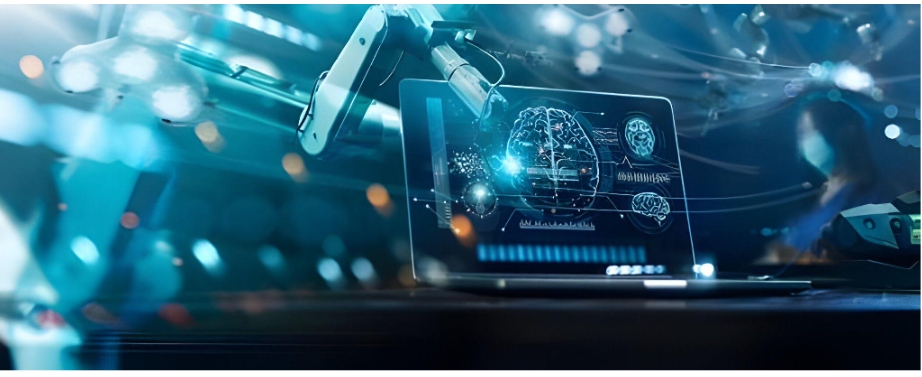How Does Imaging Technology Impact Medical Diagnostics?

Medical imaging technology has transformed healthcare by providing essential insights into the human body, aiding accurate diagnosis and treatment. This article examines the significance of imaging technology, tracing its historical development to recent advancements. It delves into the impact of AI-powered imaging, various modalities such as ultrasonography and MRI, and the benefits they offer to healthcare organizations. Additionally, it explores future trends shaping the medical imaging landscape and emphasizes technology’s critical role in enhancing patient care and outcomes.
Contents
Introduction to Medical Imaging Technology
Medical imaging technology is pivotal in modern healthcare, revolutionizing disease diagnosis and treatment. Utilizing modalities like X-ray, CT scans, MRI, and ultrasound, healthcare professionals can visualize internal structures accurately, enabling early disease detection and precise treatment planning. Artificial Intelligence (AI) integration has further bolstered diagnostic capabilities, facilitating faster analysis and enhancing patient outcomes. This seamless amalgamation of technology and healthcare has ushered in personalized and efficient medical care. The historical evolution of medical imaging, starting with Wilhelm Conrad Roentgen’s discovery of X-rays, has led to the development of diverse modalities like ultrasound and PET imaging, each serving unique diagnostic purposes. Radiologists play a vital role in interpreting these images collaborating with other healthcare professionals to deliver accurate diagnoses and treatment plans. Advanced imaging technologies such as MRI and CT scans detect various medical conditions, aiding in selecting appropriate treatment strategies and monitoring patient response, revolutionizing healthcare by enabling early detection, precise localization of abnormalities, and personalized treatment plans.
Evolution of Medical Imaging Technology
The evolution of medical imaging technology began with Wilhelm Rontgen’s discovery of X-rays in 1895, leading to advancements like MRI, CT scans, and PET imaging. These modalities have improved accuracy, efficiency, and patient outcomes. In the 20th century, CT scans revolutionized imaging by producing detailed cross-sectional images, followed by MRI’s introduction in the 1980s, offering superior soft tissue contrast. PET imaging in the 1990s allowed for metabolic tissue imaging, aiding disease detection and monitoring. These technologies have enhanced diagnoses and treatment planning across medical specialties. Recent advances, including AI analysis and virtual reality applications, have transformed medical imaging, offering faster and more precise disease detection and personalized treatment strategies.
Impact of Imaging Technology on Healthcare
Imaging Technology has a profound Impact on Healthcare. It provides clinicians with advanced tools for accurate disease diagnosis, personalized treatment planning, and improved patient outcomes. Despite the challenges, the benefits of imaging technology in healthcare are immense.
One key advantage of imaging technology is its ability to provide noninvasive ways to visualize internal body structures, aiding in the early detection and monitoring of various health conditions.
Artificial Intelligence (AI) applications in medical imaging have revolutionized the field by enhancing speed and accuracy in interpreting complex imaging data, leading to faster diagnosis and more precise treatment strategies.
Advancements in imaging technology have contributed to minimally invasive procedures, reducing patient discomfort and recovery times and ultimately improving overall healthcare efficiency and patient satisfaction.
Current Challenges in the Healthcare Industry
The Current Challenges in the Healthcare Industry hinder the seamless integration and adoption of advanced imaging technologies and AI solutions. Issues related to data privacy, interoperability, and resource constraints hinder the full potential of these innovations in healthcare.
One critical challenge in the healthcare sector is managing vast amounts of patient data. With the increasing digitization of healthcare records and the implementation of electronic health records (EHRs), ensuring the security and privacy of this sensitive information becomes paramount.
The need for standardized protocols for data exchange and interoperability between different healthcare systems further complicates the seamless implementation of imaging technologies and AI solutions.
Resource constraints, including financial limitations and skilled personnel shortage, impede the widespread adoption of cutting-edge healthcare technologies, affecting the efficiency of disease management and patient care outcomes.
Role of Imaging in Disease Diagnosis
Imaging plays a pivotal Role in Disease Diagnosis, providing clinicians with detailed insights into the body’s internal structures to accurately identify and characterize various diseases. Radiologists play a crucial role in interpreting imaging results and guiding treatment decisions.
Accurate medical imaging interpretation is essential for detecting diseases at their early stages, allowing for timely intervention and improved patient outcomes. By utilizing advanced imaging modalities such as MRI, CT scans, and ultrasound, healthcare professionals can create personalized treatment plans tailored to each patient’s unique condition.
Medical imaging not only aids in disease diagnosis but also plays a significant role in monitoring treatment progress and assessing the effectiveness of interventions. This feedback loop ensures that patients receive the most appropriate care and allows for adjustments in treatment strategies as needed.
Use Cases of AI-Powered Medical Imaging
The Use Cases of AI-powered medical Imaging are revolutionizing diagnostic accuracy, operational efficiency, and treatment outcomes in healthcare. From automated image analysis to predictive analytics, AI is reshaping the future of medical imaging technology.
AI is pivotal in enabling early detection of diseases such as cancer, reducing the margin of error in diagnosis, and accelerating treatment planning. AI algorithms enhance the interpretation of complex imaging data, aiding radiologists in providing more accurate and timely reports. Integrating AI with imaging devices facilitates real-time monitoring during surgeries, leading to improved surgical precision and reduced complications. AI-driven medical imaging solutions allow personalized treatment pathways and optimize resource allocation in healthcare facilities.
Types of Imaging Modalities
-
Ultrasonography
Ultrasonography is a non-invasive imaging technique that uses high-frequency sound waves to visualize internal body structures, aiding in diagnosing various medical conditions. It is widely utilized for its safety, real-time imaging capabilities, and versatility in medical settings.
One critical benefit of ultrasonography is its ability to provide detailed images of soft tissues, organs, and blood vessels without ionizing radiation, making it safe for patients of all ages. The real-time nature of ultrasound allows healthcare providers to observe dynamic processes such as blood flow and organ movement in a live setting, aiding in the accurate diagnosis of conditions.
Despite its advantages, ultrasonography has limitations, such as limited penetration of air-filled structures like the lungs and bones, which can hinder visualization in certain body areas. Advancements in technology have led to the development of specialized probes and techniques that help overcome some of these limitations.
-
X-Ray Imaging
X-ray imaging is a widely used diagnostic tool that utilizes ionizing radiation to create images of the body’s internal structures. It is instrumental in detecting fractures, tumors, and other abnormalities and provides valuable insights for healthcare providers.
One of the critical principles behind X-ray imaging is its ability to penetrate body tissues to varying degrees based on density, creating a contrast between different structures. This contrast allows for visualizing bones, soft tissues, and air spaces, aiding in diagnosing conditions such as fractures, pneumonia, and bowel obstructions.
X-ray imaging plays a crucial role in guiding interventions such as setting fractures, placing medical devices, and monitoring progress post-surgery. Its rapid imaging capabilities make it an essential tool in emergency departments, enabling quick assessment and triage of traumas.
-
Magnetic Resonance Imaging (MRI)
Magnetic Resonance Imaging (MRI) is a sophisticated imaging modality that uses magnetic fields and radio waves to generate detailed images of internal body structures. It is precious in visualizing soft tissues, neurological conditions, and musculoskeletal disorders.
MRI technology operates based on the principles of nuclear magnetic resonance, where hydrogen atoms in the body align with the magnetic field and emit radio signals.
These signals are captured and processed by a computer to create cross-sectional images that aid in diagnosing a wide range of pathologies.
One of MRI’s key advantages is its noninvasive nature, which makes it ideal for repeated imaging without harmful radiation exposure.
-
Computed Tomography (CT Scans)
Computed Tomography (CT Scans) utilize X-ray technology to create cross-sectional images of the body, offering detailed insights into organ structures, tumors, and abnormalities. CT scans are invaluable in diagnosing conditions requiring precise anatomical visualization.
CT scans, such as surgical planning and disease staging, are crucial in various medical scenarios. By providing three-dimensional images, CT technology enables doctors to assess the extent of injuries, plan surgeries with accuracy, and determine the progression of diseases. CT scans are instrumental in guiding interventional procedures by allowing physicians to navigate through delicate anatomical structures with precision. The high-resolution images produced by CT scanners aid in identifying small lesions, monitoring treatment effectiveness, and improving patient care.
Benefits of AI-Powered Medical Imaging
AI-powered medical Imaging offers myriad benefits to healthcare providers and patients, including enhanced diagnostic accuracy, reduced interpretation errors, streamlined workflows, and improved patient outcomes. Integrating AI algorithms has revolutionized the efficiency and efficacy of medical imaging procedures.
One critical advantage of AI in medical imaging is the ability to analyze vast amounts of data in a much shorter time frame than traditional methods, leading to quicker and more accurate diagnoses. AI technology can also assist radiologists in detecting subtle abnormalities that may be overlooked by the human eye, thereby improving early detection rates for conditions such as cancer or cardiovascular diseases.
Enabling Healthcare Organizations with Imaging Technology
Imaging Technology is instrumental in enabling healthcare organizations to deliver superior patient care, optimize operational efficiency, and stay at the forefront of medical innovation. Integrating AI and advanced imaging solutions gives healthcare providers the power to make informed decisions and enhance clinical outcomes. Physicians Group, LLC, a Joint Commission-accredited facility, serves as a one-stop shop for musculoskeletal injuries. It utilizes cutting-edge imaging technology to provide accurate diagnoses and tailored treatment plans for their patients.
Utilizing cutting-edge imaging technology, healthcare organizations can provide more accurate diagnoses, leading to personalized treatment plans tailored to each patient’s unique needs. By leveraging AI algorithms, healthcare systems can swiftly analyze vast amounts of medical data, helping with early disease detection and proactive intervention.
Imaging technology aids in streamlining workflows within healthcare settings, reducing patient waiting times and enhancing overall operational efficiency. This integration improves patient outcomes and drives technological advancements in the field, shaping the future of healthcare delivery.
Future Trends in Medical Imaging
Future Trends in Medical Imaging are poised to revolutionize healthcare delivery and disease management. They focus on AI integration, virtual reality applications, and precision imaging modalities.
In recent years, advancements in medical imaging technology have accelerated the progress toward more accurate and efficient diagnostic processes. AI algorithms now play a crucial role in analyzing complex imaging data, leading to faster and more precise diagnoses. Virtual reality applications provide immersive experiences for healthcare professionals and patients, aiding in surgical planning and medical education. Integrating advanced modalities such as MRI, CT scans, and PET scans enables healthcare providers to obtain detailed insights into the human body’s structure and functions.



